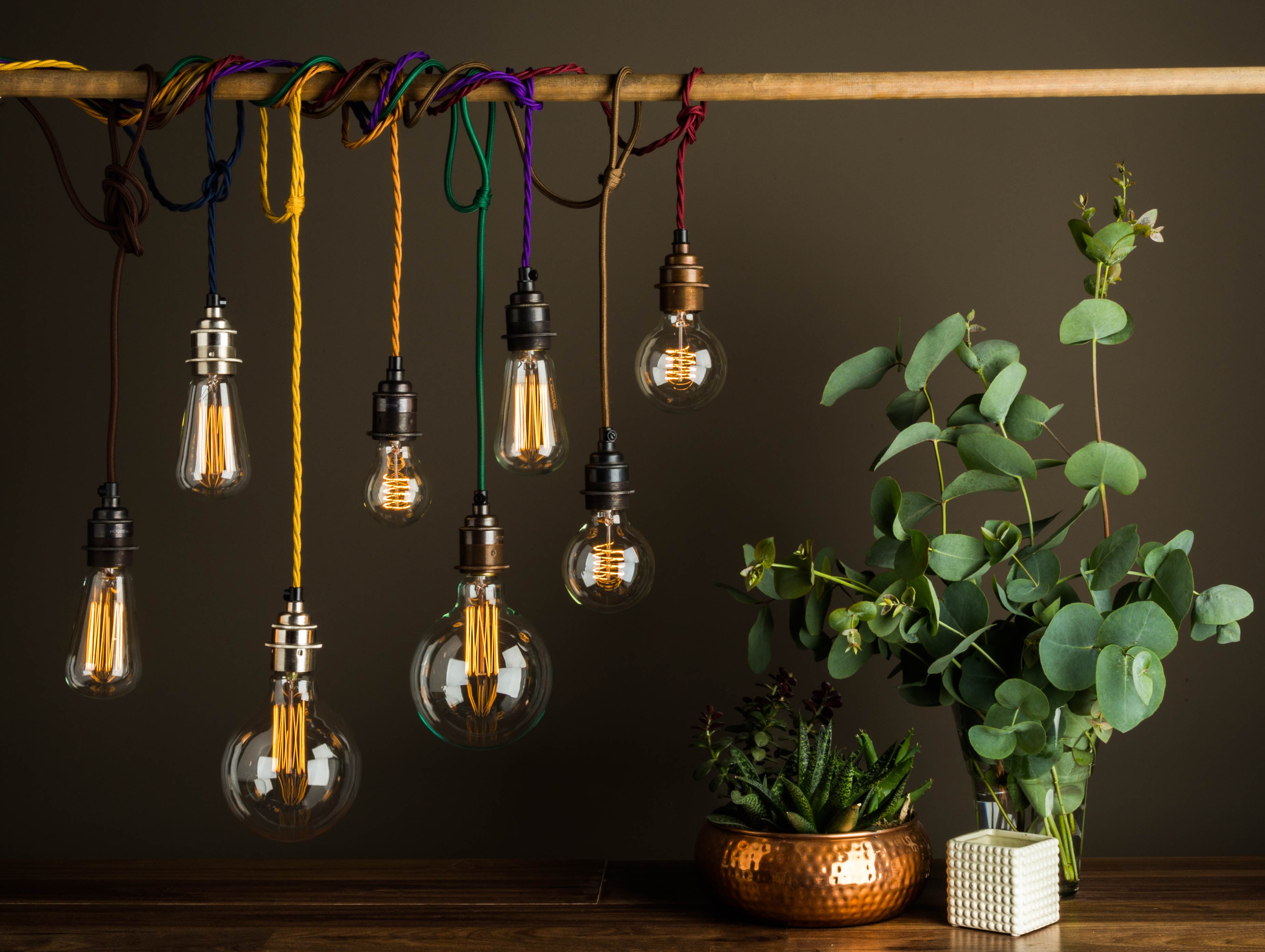We were lucky enough to sit down with the multi-talented Sophie Bush, founder of Warehouse Home, earlier this month. We got to put our pressing decor questions to the lady who literally wrote the book on the warehouse design phenomenon.
Sophie Bush 4th October 2016

 The industrial style is incredibly adaptable. Original furniture and accessories salvaged from factory settings can all be easily incorporated into any interior scheme and they have the added benefit of being incredibly durable. There are so many different ways to interpret ‘industrial style’: concrete and plywood look great together and a bold shot of colour really works with these materials; or you might choose a vintage look with classic factory designs sourced from salvage shops.
The great thing about channelling an ‘industrial style’ is that you can combine raw, vintage and contemporary elements. Modern apartments and country houses can easily accommodate industrial touches too – start with smaller items, such as lighting and accessories and build your confidence.
The industrial style is incredibly adaptable. Original furniture and accessories salvaged from factory settings can all be easily incorporated into any interior scheme and they have the added benefit of being incredibly durable. There are so many different ways to interpret ‘industrial style’: concrete and plywood look great together and a bold shot of colour really works with these materials; or you might choose a vintage look with classic factory designs sourced from salvage shops.
The great thing about channelling an ‘industrial style’ is that you can combine raw, vintage and contemporary elements. Modern apartments and country houses can easily accommodate industrial touches too – start with smaller items, such as lighting and accessories and build your confidence.

Warehouse home conversions, design, interiors and more...
Where does your love of warehouse style come from?
I have always been inspired by architecture and interior design and I have always worked in magazine publishing. But it was the purchase of my home in a listed warehouse conversion in east London that offered me the opportunity to pursue my passion for interior decor and architecture and that led to the launch of Warehouse Home. The unique characteristics of the listed Victorian building, which we had stumbled upon by accident, had immediately inspired me. There's a sense of living in, and helping to preserve, a piece of history. As I started to source new furniture and lighting to suit our home's original features, I quickly realized that the industrial aesthetic was absolutely everywhere…and yet there wasn’t a single premium media brand catering specifically to New York style loft living and that distinctive warehouse look. Knowing I had spotted a gap in the market, I left my job in 2014 and launched Warehouse Home.
What are the biggest challenges when transforming a warehouse space?
Industrial conversions are filled with grit and character. There is an authenticity and originality to such properties and their features and a real sense of heritage. But these heritage features are not without their problems – exposed brickwork can need specialist treatment and steel columns aren't always in the most ideal locations when the building is converted for residential use. If the building is listed there are further restrictions on what can and can't be done. But this all presents an exciting creative challenge for design-conscious homeowners and ambitious architects. And these buildings offer a fantastic opportunity to be really imaginative, including by sourcing original décor to complement and contrast with heritage elements.Name your three iconic warehouse must-haves?
The right lighting is a must-have in any home but it's also a great way to play off the heritage features of a warehouse conversion and reference the building's original use. So many of Urban Cottage Industries designs are absolutely perfect for a warehouse conversion or for any scheme with a vintage or industrial influence. Concrete is also a favourite material of mine and another way to enhance an industrial scheme, whether in an authentic warehouse conversion or not. There are so many imaginative designs on the market at the moment in concrete – and they range from very small accessories right the way to furniture and even lighting so there are plenty of ways to be creative with this material. Good storage is another essential consideration in a modern home. And there are so many iconic designs that will enhance the vintage / industrial elements of a space. Consider modern furniture mounted on castors for an easy industrial touch or source vintage pieces that would have started their lives in an industrial setting, like metal lockers or filing cabinets.How would you use lighting to make open plan or large spaces feel more intimate?
For me, in an open-plan living space it's all about creating individual living 'islands' – each with its own individual purpose, e.g. reading, dining, sleeping – with focused lighting to define each area. A feature pendant over a dining table will define a family / entertaining space and a striking floor lamp will provide directional lighting that’s ideal for reading and will immediately attract attention to a cosy corner.What are your tricks for choosing great lighting?
Lighting is so often overlooked in home decorating, but it can completely transform a space. If you want to take a truly authentic approach for a warehouse inspired scheme, consider pieces directly from - or designs directly inspired by - factory settings. Modern designs inspired by factory shades will bring an instant touch of industrial style – with the added benefit of being incredibly practical too. I like clever, hardwearing designs that are beautifully crafted without being over-engineered. The most important thing about choosing any great lighting is to take your time researching the best solutions for your space. I also think it can be worth investing a little more to create a real design feature rather than just finding a functional piece.Bulb decisions - LED, traditional filament or Eco-filament?
There are so many bulbs on the market now and it can sometimes feel a bit overwhelming. But the right bulb will complete a beautifully designed light and an industrial-inspired interiors scheme. Eco-filament bulbs mimic the iconic traditional filament bulb but offer the added benefit of being energy-efficient.Is Warehouse style changing? If so, in what way?
What really excites me about the warehouse style is its enduring and global popularity. It's an increasingly popular way of living. And there are so many ways in which the industrial aesthetic can be interpreted. In Warehouse Home magazine, we celebrate 'current trends' but what we're really demonstrating is that there are such a wide range of ways in which to complement industrial features or achieve an industrial inspired scheme, whether you live in a warehouse home or not.What are the biggest three warehouse style trends right now?
I think it’s always going to be that combination of vintage and contemporary that makes ‘loft living’ so popular. The original features of a warehouse conversion also offer an exciting creative opportunity to contrast different materials – tarnished and polished metals and with raw timber, concrete, glass. There are some great new materials on the market which also lend themselves perfectly to warehouse living and industrial inspired schemes – with decorative accessories crafted from Jesmonite and terrazzo for example.Any tips on how to achieve warehouse style in a non-warehouse space?
The Warehouse Home book will appeal to anyone who lives in, or has always dreamt of living in, a warehouse conversion or loft. But it’s also already proving to be just as popular with readers who are seeking elements of that industrial aesthetic – because it's a look that can be readily adapted to any home and interior scheme. It is so easy to incorporate industrial touches in any home and we want to offer our readers all of the inspiration and resources to do exactly that in our bi-annual magazine and our book. The industrial style is incredibly adaptable. Original furniture and accessories salvaged from factory settings can all be easily incorporated into any interior scheme and they have the added benefit of being incredibly durable. There are so many different ways to interpret ‘industrial style’: concrete and plywood look great together and a bold shot of colour really works with these materials; or you might choose a vintage look with classic factory designs sourced from salvage shops.
The great thing about channelling an ‘industrial style’ is that you can combine raw, vintage and contemporary elements. Modern apartments and country houses can easily accommodate industrial touches too – start with smaller items, such as lighting and accessories and build your confidence.
The industrial style is incredibly adaptable. Original furniture and accessories salvaged from factory settings can all be easily incorporated into any interior scheme and they have the added benefit of being incredibly durable. There are so many different ways to interpret ‘industrial style’: concrete and plywood look great together and a bold shot of colour really works with these materials; or you might choose a vintage look with classic factory designs sourced from salvage shops.
The great thing about channelling an ‘industrial style’ is that you can combine raw, vintage and contemporary elements. Modern apartments and country houses can easily accommodate industrial touches too – start with smaller items, such as lighting and accessories and build your confidence.









Leave a comment
This site is protected by hCaptcha and the hCaptcha Privacy Policy and Terms of Service apply.